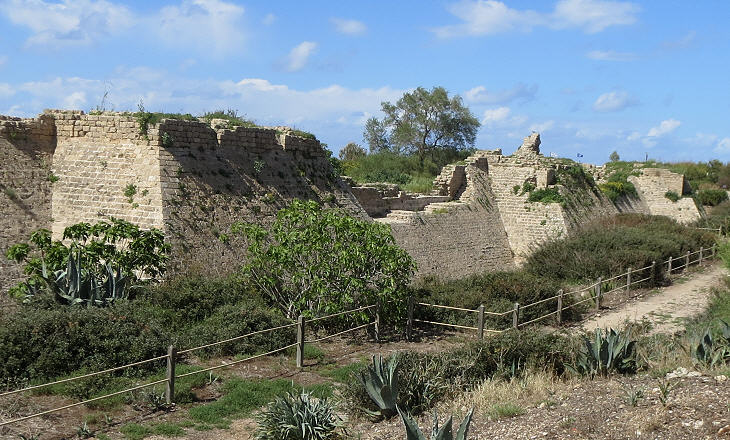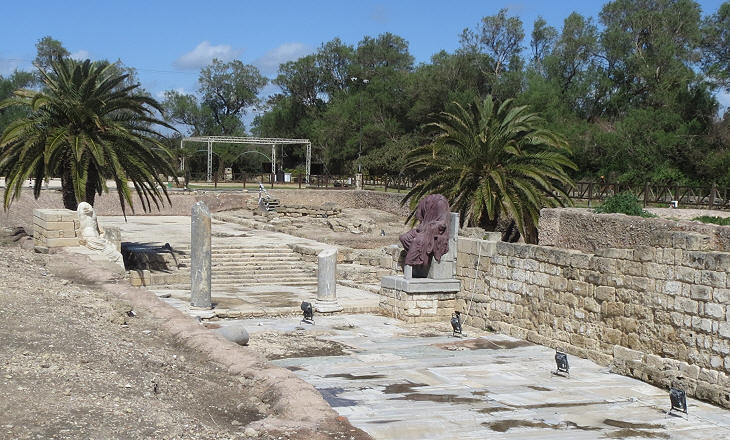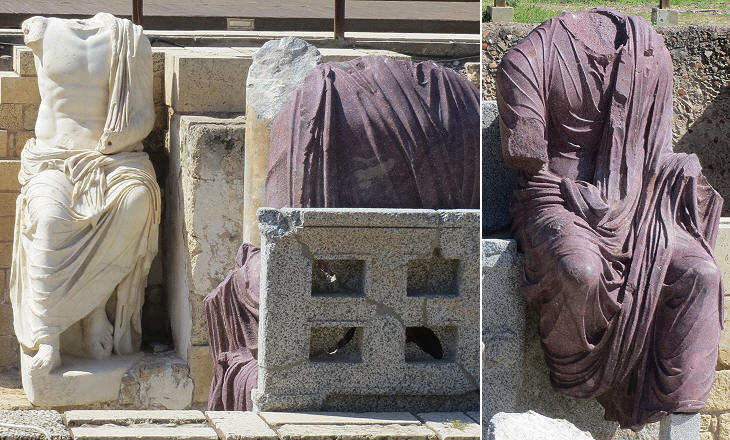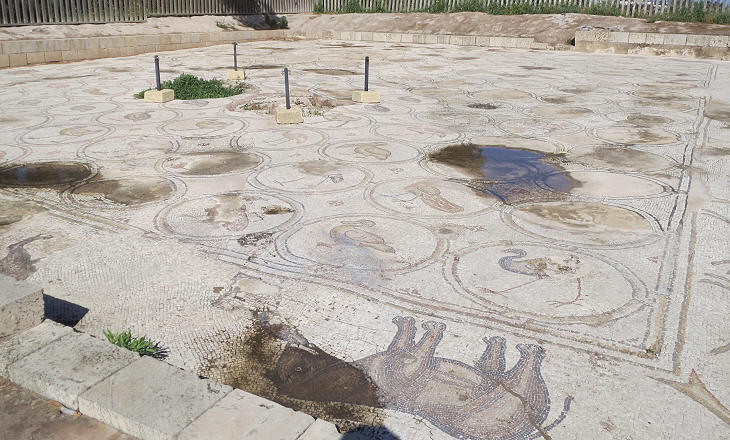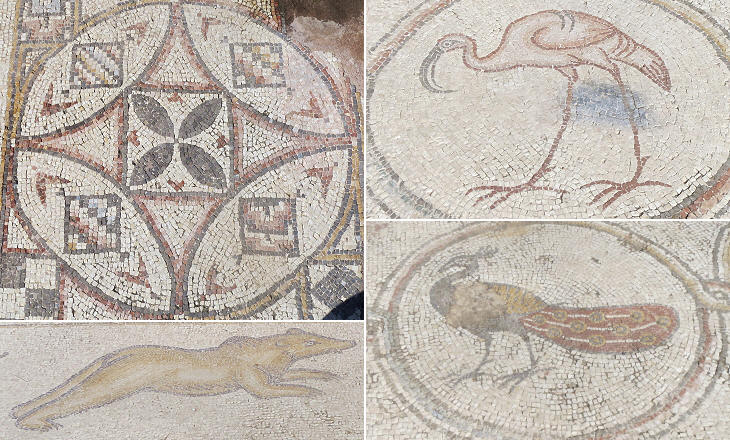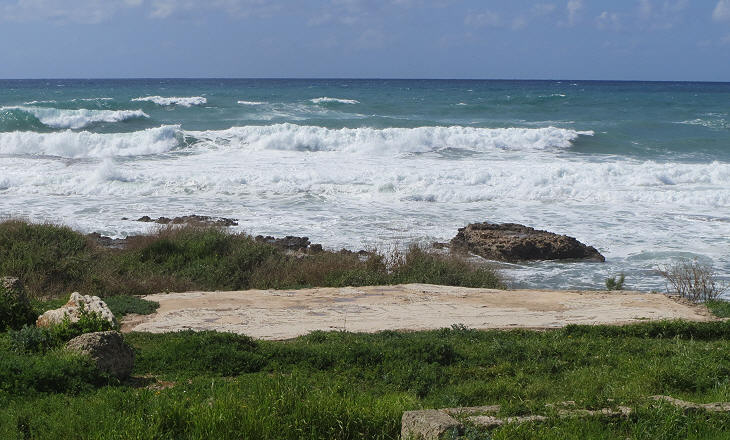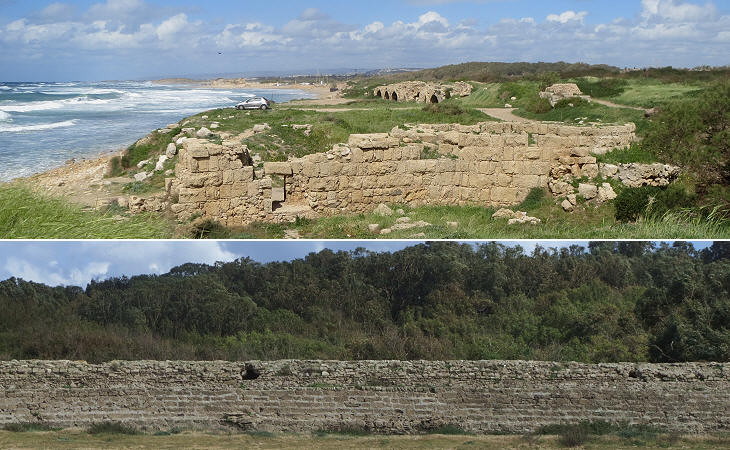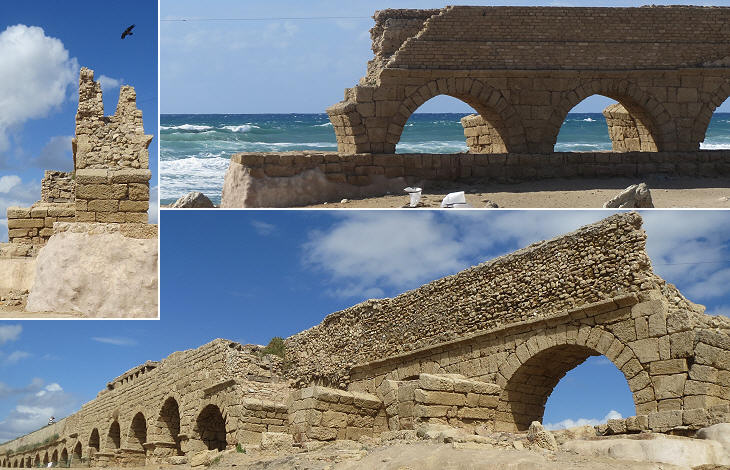  What's New! Detailed Sitemap All images © by Roberto Piperno, owner of the domain. Write to romapip@quipo.it. Text edited by Rosamie Moore. Page added in July 2013. |
 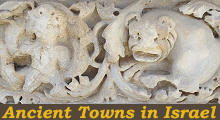 - Caesarea - page two: Outside the Medieval Walls - Caesarea - page two: Outside the Medieval Walls(relief at Scythopolis) If you came to this page directly, you might wish to read a page with an introduction to this section or page one first.
The walls built in 1254 to strengthen the defence of the Crusader town mark the limit of the archaeological park. They enclose only a small part of ancient Caesarea. The town had a theatre, an amphitheatre and a hippodrome. Its population must have been in the region of tens of thousands of inhabitants. The office of the archaeological park provides only scanty information on the monuments outside the walled town. They are situated in an area which has been developed by a private foundation, which acts as a municipality and has therefore great latitude of power.
At a short distance from the walls what appears to be a large facility for parties (it was closed on the day of my visit) offers its customers the opportunity to walk over a cardo, a north-south street of Caesarea. The street was restored in the VIth century and it retains a mosaic with a celebratory inscription similar to that at Palladius Street in Scythopolis. The street was therefore an important one and it is unlikely it was located in a peripheral area. Assuming it was Cardo Maximus, the central north-south street of the town, half of ancient Caesarea lies to its east beneath modern villas, one of which belongs to Benjamin Netanyahu, a prominent Israeli politician.
Two large statues were found when excavating the cardo; they have been placed one opposite the other as an embellishment to the street. They were probably removed from palaces or temples. Most likely they portrayed emperors; the white marble one depicted a deified emperor, the porphyry one an emperor holding a globe, the symbol of his power and sitting on a sort of throne. The white marble one was probably made at Afrodisias, a town in Asia Minor with many sculpture workshops. Guidebooks indicate the personage of the porphyry statue as Emperor Hadrian, but that emperor was usually portrayed naked (see a statue at Pergamum) or as a military commander (see a statue at the Museum of Israel). If I had to make a guess I would say Diocletian (see the porphyry statues of the Tetrarchs at Venice).
In the 1950s a VIth century mansion was identified half a mile east of the walled town. After a few years it was covered to avoid its deterioration. In 2004-05 the foundation which developed the neighbourhood excavated and restored the mosaic of the central courtyard of the mansion and designed a small public garden around it. The ruins of the other parts of the mansion however lie under the ground and at first sight the mosaic area can be mistaken for a small roller skating facility. The presence of the mosaic is ignored in the leaflet given at the archaeological park, nor is it indicated by signposts or maps of the area. The courtyard had a drainage system 1500 years ago, but today it does not. The management of the foundation ought to shelter the mosaic.
Birds inside medallions are portrayed in the central part of the mosaic, whereas wild animals (including the lion which you see in the image used as background for this page) are depicted in the frame. Birds and wild animals were a common subject for mosaics and they were often associated with Orpheus (as at Philippopolis in Syria); when the portrayal of pagan gods and heroes was forbidden, the animals were depicted by themselves as at the Villa of the Aviary at Carthage.
The desecration of a synagogue and the ensuing massacre of 20,000 Jews marked the beginning of the First Jewish Revolt (67-73 AD) according to Flavius Josephus. Some Rabbis regarded Caesarea as the frontier of Palestine and the town was held not to belong to the land of Israel, yet Jews returned to live there. A synagogue with a mosaic floor has been identified immediately to the north of the medieval walls. Unfortunately access to it is not allowed for safety reasons because it is on the edge of a small cliff.
Strato's Tower was the name of a small settlement founded by the Phoenicians. It has been identified in a complex of ruins north of the medieval walls. The site looks rather abandoned, but it is very evocative with the view of the coastline and the ruins of an aqueduct built by Herod the Great and restored in the IInd century by the Romans. The aqueduct ran too close to the coast and at one point part of it collapsed into the sea. A second aqueduct was built inland; it still provided Caesarea with water, but it was not that impressive.
The growth of Caesarea required additional water and two other sources were added to the initial one, so that the aqueduct had three conduits (Aqua Claudia near Rome had two conduits). These improvements were carried out by the legions which Emperor Hadrian stationed in Palestine after the Second Jewish Revolt (132-35). You may wish to see a page on Roman construction techniques. Return to page one: Caesarea within the medieval walls Move to: Introductory page Ancient Synagogues: Introduction, Korazim, Capernaum and Hamat Teverya Ancient Synagogues: Bet Alpha, Diocaesarea and Ein Gedi Diocaesarea (Zippori) Herodion Mamfis (Mamshit) Masada Megiddo Necropolis of Bet She'arim Oboda (Avdat) Scythopolis (Bet She'an)  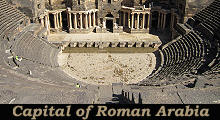 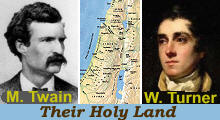 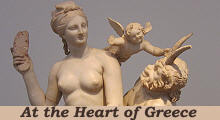 |
